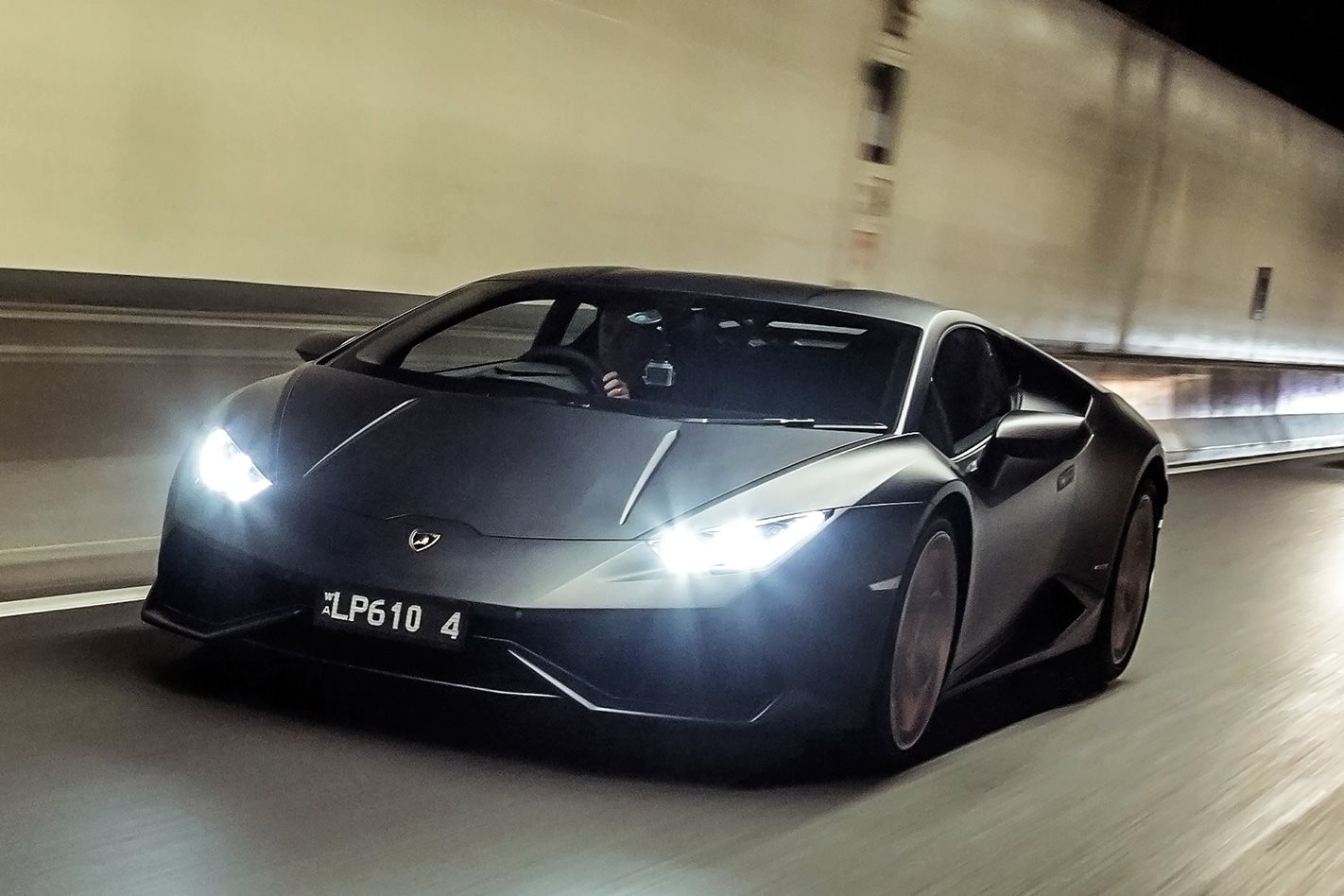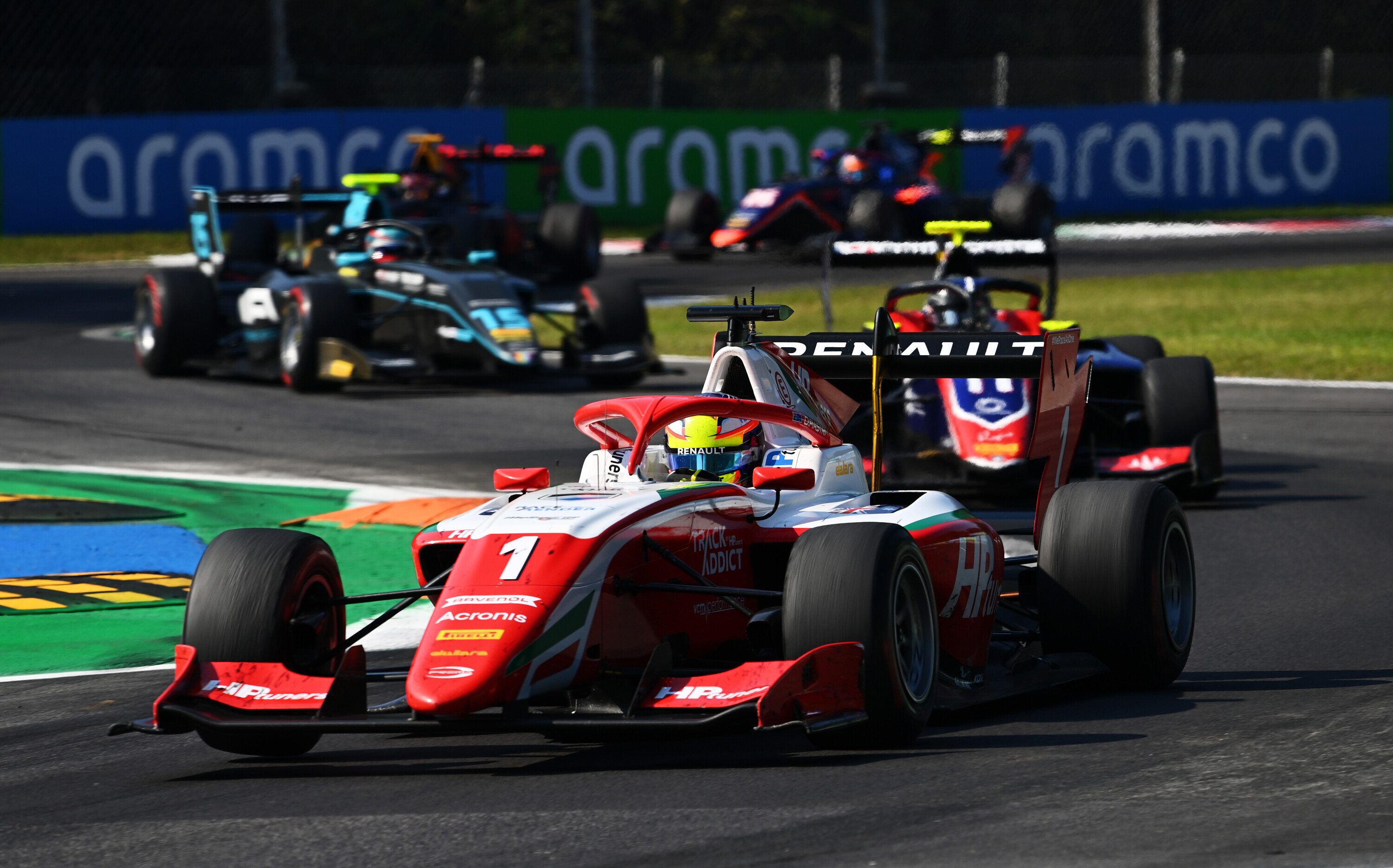The further you drive in Australia with this petite Lamborghini, the faster 449kW feels.
First published in the August 2015 issue of Wheels magazine, Australia’s most experienced and most trusted car magazine since 1953.
THERE are some days where the inevitability of autonomous cars – and an end to all we know and love of driving – seems only mildly appalling. Like the loss of full-strength beer at the cricket, choosing films in a “video” shop and making eye contact with strangers.
And then there are others where it seems like such a loss to humanity that you just want to take the Google Car out with a rocket launcher. It’s been a few of those days because we’ve been driving the new Lamborghini Huracan LP610-4 on Aussie roads for the first time, an experience that brought joy to people near and far, but especially those within the car.
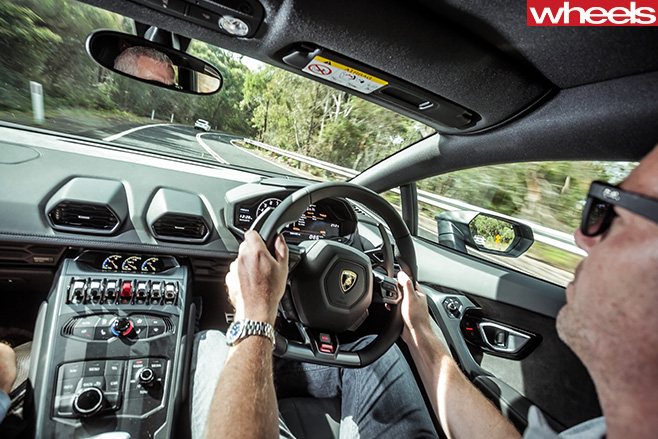
Then there were the disbelieving, almost involuntary smiles on the faces of thousands of people we drove past. And my personal favourite, the 70-in-the-shade tradie who leaned in the window to say: “Nice car. Must be expensive, eh? Shame you had none left over to paint it.”
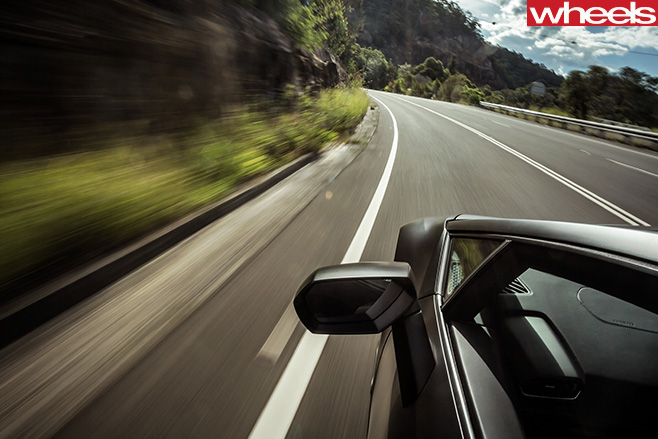
The Huracan has an Anima (it’s Italian for “soul”) switch at the bottom of the stumpy steering wheel that starts up in Strada (“Street”) and gives you completely the wrong idea about the car. While it kicks into life with the grumbling of a bear in the woods, it soon settles into quiet, almost polite obedience. There’s a nice, low growl from the exhaust and it’s certainly not slow – 449kW and 550Nm never is – but it is remarkably compliant and restrained for a supercar.
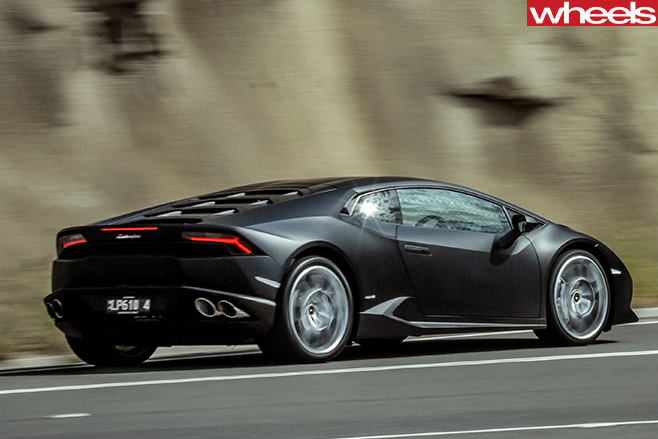
Flick the switch to Sport, however, and it sounds like someone’s shoved a modified Harley-Davidson up your backside, only with more crackle and pop on the overrun. I’ve never made so many unnecessary down-changes in one car. This was also partly because using the giant paddle shifters is such childish fun; they look and feel like Teenage Mutant Ninja Turtle toys, and are almost sharp enough to cut yourself on.
Other parts of the interior are a bit disappointingly plastic, however, and there’s still too much Audi in some of the buttons, all of the software and the key, which could be from an Audi A4. Putting the controls for the indicators and wipers (which aren’t very good when it rains) on the steering wheel is also slightly annoying. My biggest complaint, though, is that the seats are too hard and particularly punishing on your lower back.

To drive something as savagely modern and yet thrillingly old-school – it’s probably the last all-new naturally aspirated supercar we’ll ever see – is outrageously good fun.
With 100km/h arriving in a claimed 3.2 seconds, a full half-second faster than the Gallardo, and 200km/h in a sniff under 10, the acceleration spins your adrenalin and testosterone into a heady cocktail every time you get into it. And the brakes are astonishing.
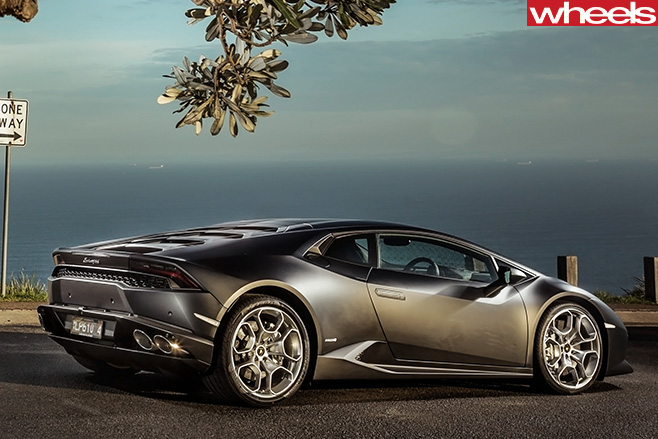
When I first drove the Huracan, at the F1 circuit in Shanghai, my driving instructor/racer said it was the first car in which he would choose to leave the electronic programs on because it was faster that way. It allegedly uses the same technology that controls modern fighter jets, which are so fast and darty they’re inherently unstable without computer help. It has three accelerometers and three gyroscopes and its software is constantly monitoring your position in space and time, as well as steering and pedal inputs. The power output to all four driven wheels is continuously adjusted for maximum grip and if you really stuff up, the system will even adjust the steering for you. Disturbing.
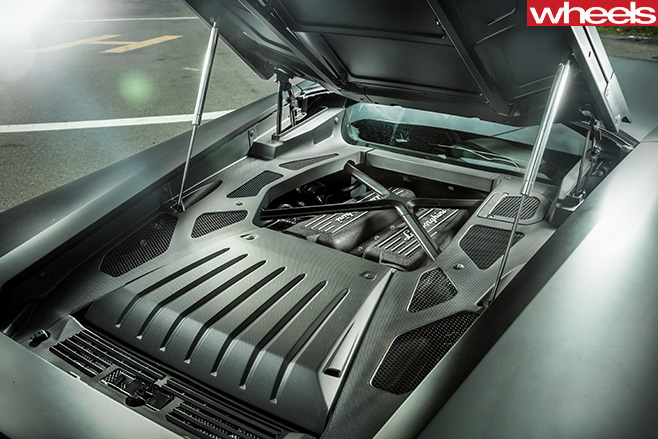
Riding over Australia’s occasionally appalling roads is always a test for something that sits lower than a sausage dog and, sure enough, you simply can’t leave the Anima switch in Corsa unless you know the road ahead will be perfect. In this track mode, even small bumps will hurt your ribs and the Huracan’s nose. On pockmarked tarmac, just choose Strada and take it easy because you’ll occasionally scrape the front-end if you push too hard.
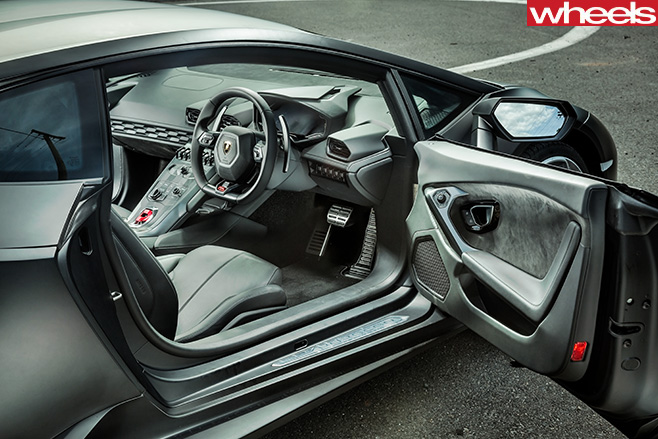
You could live with the Huracan on Australian roads, thanks to the Anima settings and the standard hydraulic nose-lifter, but you’d still want to avoid speed humps. And you’d want to invest in track days because, while it’s fun up to 110km/h, you really want to go faster than that to fully appreciate its genius.

As you’d hope, the Huracan is utterly thrilling to drive and you get out of it after every journey, even to the shops and back, feeling like you’ve just inhaled or injected something illegal. If this is what being rich feels like, I’m even more gutted that I’m not.
It’s quite a ride from the passenger seat as well. I had one bloke ask me, in all seriousness, whether you needed a special licence to drive cars like this. It really is that far removed from everyday motor vehicles, and a billion miles away from the self-driving EVs and hydrogen-powered whisper-mobiles that seem to be our future.
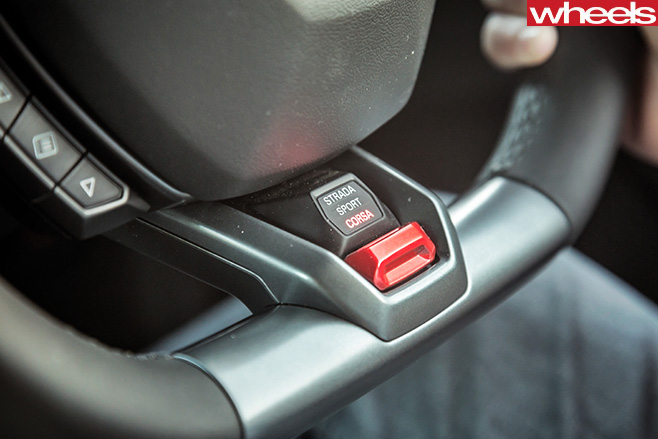
Ingredients for roast Lambo
1. Carbon-ceramic brakes make stopping from even 250km/h seem a simple affair
2. Built largely from carbonfibre and aluminium, this new baby Lambo is 10 percent lighter than the Gallardo
3. Huracan is the first Lamborghini produced under new head of design Filippo Perini
The black art of keeping clean
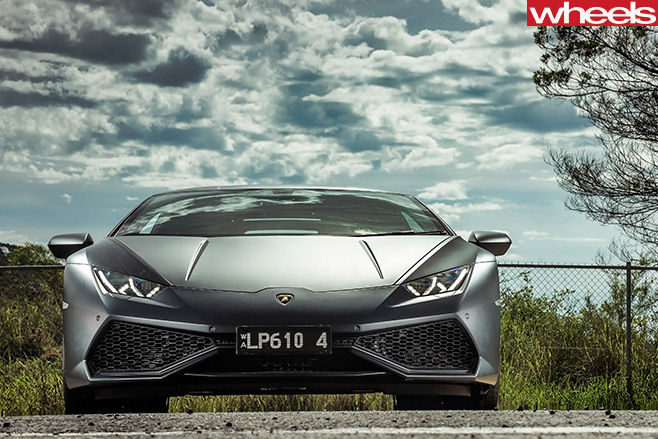
As fingerprints started to smudge up the area around the doorhandles, and general road grime began to affix itself to the matte surface, we also started to worry.
But the good people at the dealership informed us that the matte-black job comes with a special cleaning kit, featuring delicate brushes, special unguents and powders, which you can hand to your servant/mechanic, along with the instructions, and wish him well.
SPECS Model: Lamborghini Huracan LP610-4 Engine: 5204cc V10 (90˚), dohc, 40v Max power: 449kW @ 8250rpm Max torque: 560Nm @ 6500rpm Transmission: 7-speed dual-clutch Kerb weight: 1532kg 0-100km/h: 3.2sec (claimed) Fuel economy: 12.5L/100km Price: $428,000 On sale: Now

